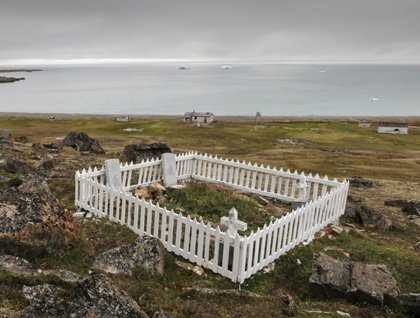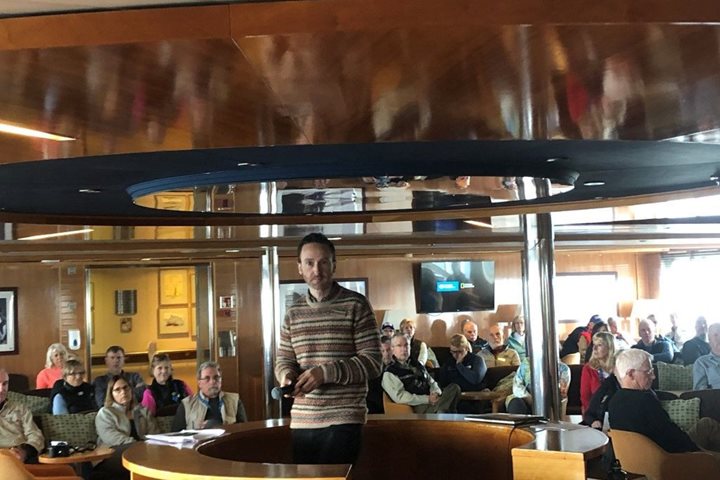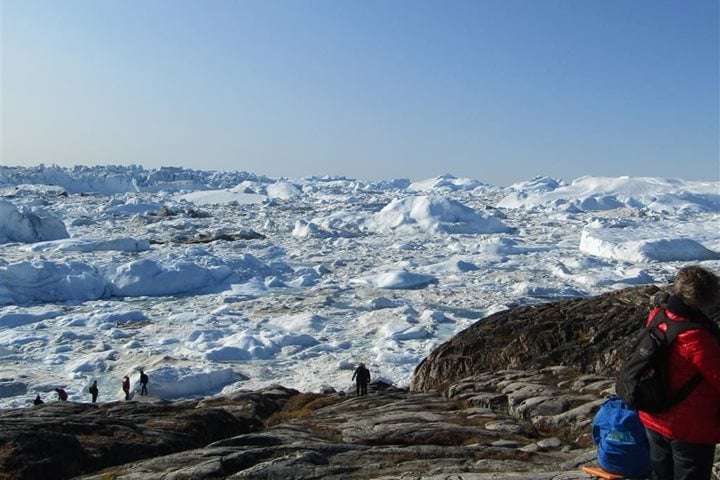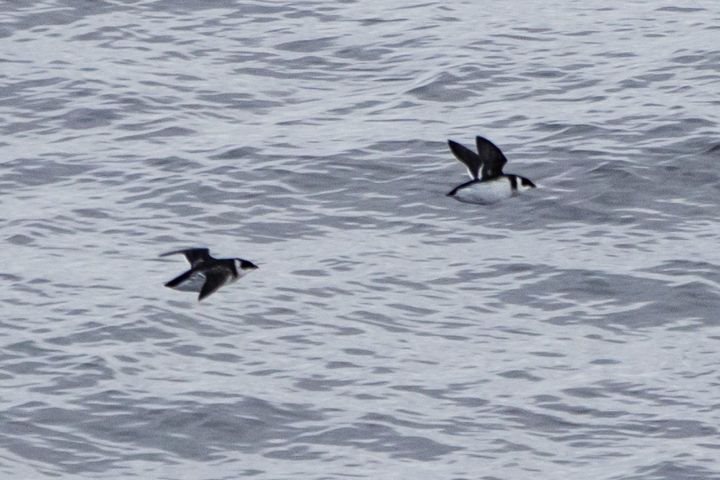The year is 1924. Imagine being one of three men dropped at 74 ̊31’ 32” north latitude in one of the most remote regions of the Canadian High Arctic, with no communication and your only contact with the outside world passing through once a year via ship. Now imagine being the only one of the three who survives your three-year charge and having to report to the Royal Canadian Mounted Police (RCMP) what happened since last time they saw you. This was the scene in 1927 when Constable E. Anstead was finally taken home after isolation, and an accident, took his two companions during their service at the eastern entrance to the fabled Northwest Passage. For nearly three years these men lived in a cluster of wooded structures at the southern end of Devon Island in a place called Dundas Harbour.
National Geographic Explorer pulled into Dundas’ protected anchorage this morning to overcast skies, a chill in the air and the scent of walrus wafting on the wind. Located not far from the remains of a former Thule site, about a dozen hauled-out walrus served as an example as to how these two different groups, at two very different time periods, were able to withstand such a harsh environment for extended periods of time.
Near our Zodiac landing site were well-preserved remains of what once were the houses, burial sites and rubbish heaps of the descendants of modern-day Inuit, the Thule. No doubt designed for the high winds and bitter cold of a high arctic winter, the remains of these houses show what must have been a very low-profile structure built of stone and likely topped with whale bones and sod at one time. All that remains are their lichen-encrusted circular foundations. Nearby were a few grave sites and further on still the mother load—a midden! This particular midden held the remains of whatever these Thule discarded seven to eight hundred years ago when they lived here. Their trash heap was littered with whale, dog, caribou and even polar bear bones and showed clear signs of tool use. A great site for those archeologists at heart.
For those historians at heart our morning ashore eventually shifted to the east and led us to the remains of the aforementioned RCMP site. While wind battered and dilapidated the remaining structures and gravesite served as a sobering reminder not only of the harsh conditions these mounted police endured but of the dedication they had to their national defense.
From the southern shores of Devon Island we plied east through the afternoon until making a turn to the south which will lead us all the way along the eastern coast of Baffin Island over the next few days. It wasn’t long after this right-hand turn before a pod of killer whales slowed our transit and occupied us for the next hour with close passes across our bow and crisscrossing under our ship. As many as eight animals filled our viewfinders at any one time, occasionally passing in line with distant icebergs to set the stage for what was a dramatic close to our time in the furthest reaches of our voyage.







